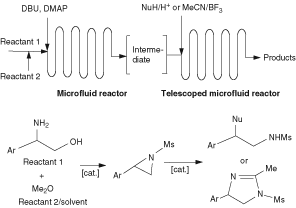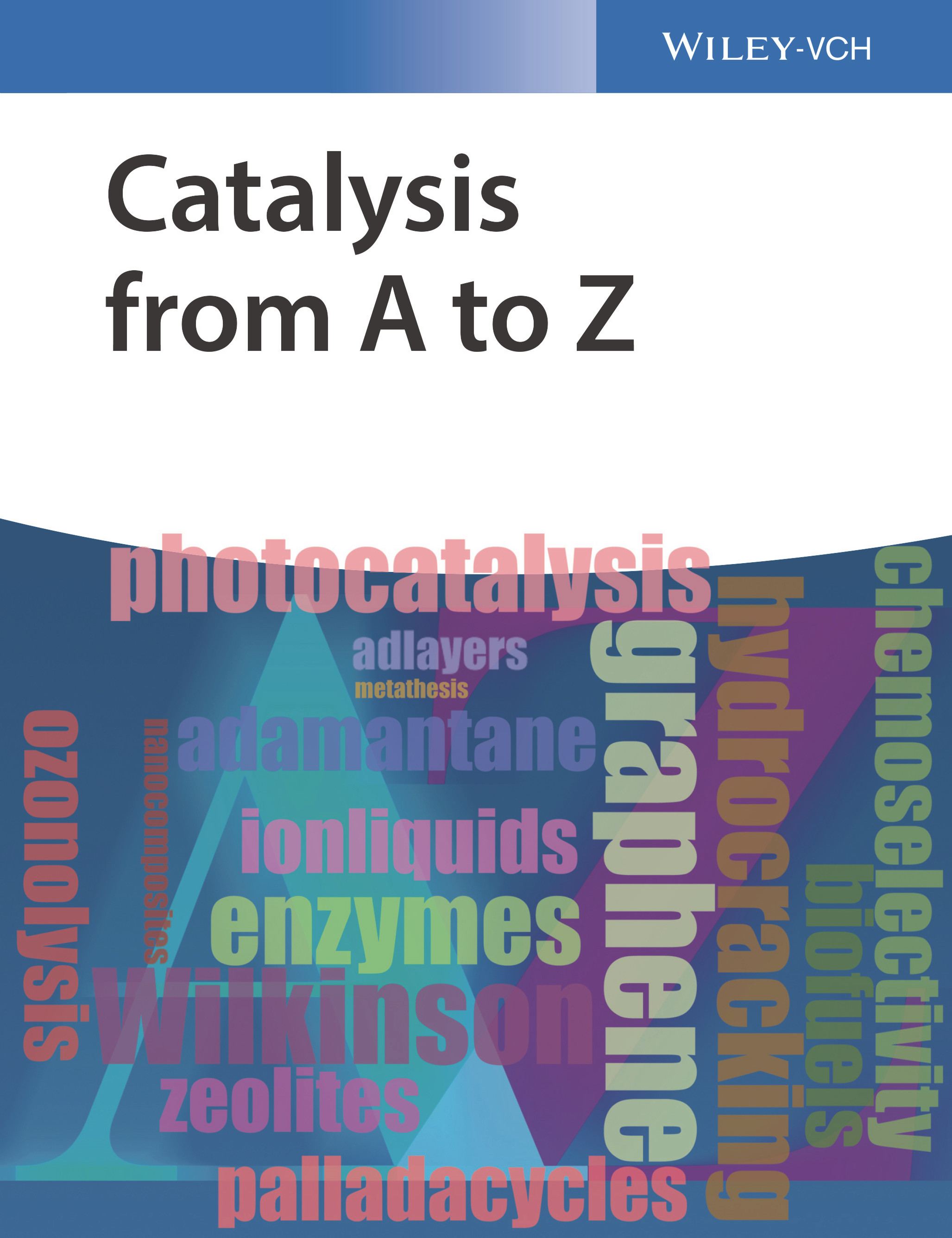flow processes
(flow reactors) Fp. are continuously operated chemical reactions in flow reactors, special kind of ▸▸▸catalytic reactors, e.g., ▸▸▸tubular reactors. These can be single or arranged in bundles, empty for ▸▸▸homogeneous reactions (with ▸▸▸homogeneous catalysts), or packed with cat. particles for heterogeneous reactions. In some cases, packing is often with inert material to serve as a preheater. Frs. are highly customizable and can be made to various lengths and diameters and engineered for various pressures, temps., and ▸▸▸Reynolds numbers (turbulent or laminar flow). Frs. may be built of steel, glass, ▸▸▸quartz glass, etc. and thus also allow irradiation and photoreactions. Frs. are often ▸▸▸microreactors (▸▸▸ microreaction technology, ▸▸▸miniplant, ▸▸▸catalytic microreactor) and are operated from a lab to industrial scale, with glass or heavy equipment for vast improvements in energy efficiency, reactant mixability, reaction velocity (▸▸▸reaction dynamics), ▸▸▸yields, safety (▸▸▸safe chemistry, ▸▸▸safer precautions), reliability, scalability (▸▸▸scaling up), etc. The handling of gases needs special conds.
This technique allows the chemistry to be undertaken with limited exposure to the potentially hazardous aziridine intermediate.
Numerous reactions and cats. have been employed in fps. such as ▸▸▸biocatalytic and ▸▸▸chemoenzymatic procs., ▸▸▸Oppenauer oxidations, and ▸▸▸photoredox reactions. An organometal example is the base-cat. of dimethylalkynylaluminum from AlMe3 and terminal alkynes.
Flow reactors have up to three reagent inputs for cat. (or noncat.) A+B and A+B+C reactions and are commercially available, e.g., from Parr, Chemtrix, Coflore, and others. A recent and nice example is given under the keyword ▸▸▸Negishi reaction.
Cont. flow photochemistry has been discussed by Noel et al. (Chem.Rev. 2016, 116, 10276). E=F; G Durchflußreaktoren.




